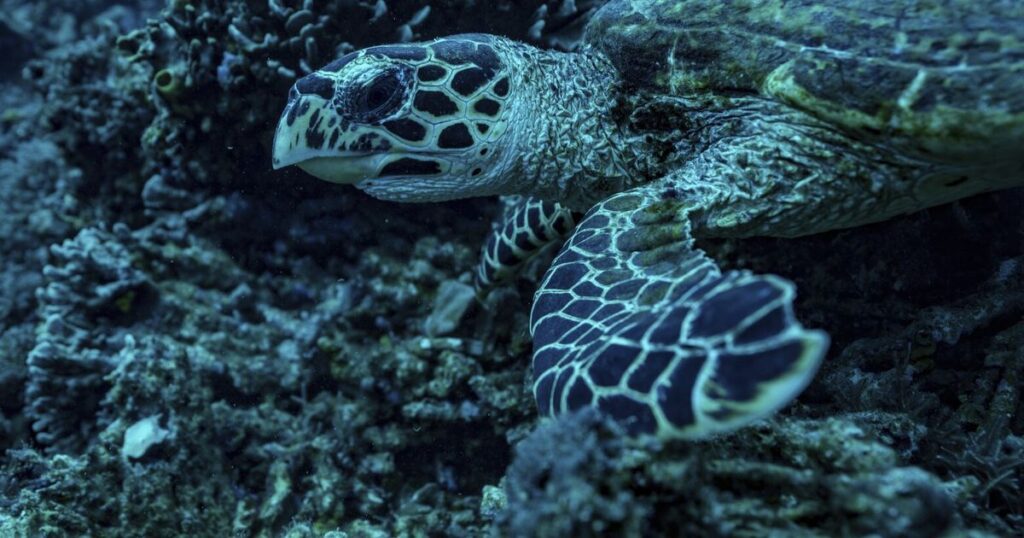OFF THE COAST OF EFATE ISLAND, Vanuatu (AP) — Beneath the turquoise waters of Vanuatu, amid a graveyard of broken coral, a moray eel peers from the branches of a staghorn colony. Nearby, the feathered arms of a yellow sea lily sway in the current and a turtle grazes on algae growing along the reef. These flickers of life hint at a slow but hopeful recovery.
For the past decade, the South Pacific island nation’s coral reefs have faced one punishing blow after another. Cyclone Pam in 2015 hit from a direction that left one reef particularly exposed.
“The way the waves came in actually smashed the coral,” said John Warmington, a longtime resident of Vanuatu who’s been diving the reef for more than 10 years. “I can remember our first dive after the cyclone and my friends and I were all in shock. Coral heads turned over, smashed staghorns — all laid bare.”
In the days that followed, heavy rains washed sediment into rivers that emptied into the sea, blanketing corals in a thick debris that blocked the sunlight they need to survive.
Other threats followed. Crown-of-thorns starfish — natural coral predators whose populations can surge after heavy rains wash nutrients into the sea — swept in to devour what remained. Though native to the region, they can multiply into outbreaks that decimate hard corals, especially vulnerable species like staghorns and plate corals. In 2023, two cyclones struck within days of each other, flattening swaths of reef that had just begun to regrow. And in December 2024, a 7.3-magnitude earthquake shook the seafloor.
“The whole reef slid down into the deep like an underwater landslide,” Warmington said. “We just saw heartbreak.”
Vanuatu, which is home to about 300,000 people spread across 83 islands, is among the countries most vulnerable to climate change. Here, rising seas and saltwater intrusion are reshaping coastlines and disrupting daily life. Since 1993, sea levels around Vanuatu’s shores have risen by about 6 millimeters (.24 inches) per year — significantly faster than the global average — and in some places, tectonic shifts have doubled that pace.
Despite all the disaster and hardships, some shallows are bouncing back. Clownfish take refuge inside anemones. Schools of silver mono fish flicker in the sun. A kaleidoscope of hard and soft corals have begun to root themselves to the reef once again.
Still, in one of the world’s most disaster-prone regions, that recovery remains fragile.
“We’re seeing new corals coming through, but do they get a chance to actually grow before another insult comes and damages them?” said Christina Shaw, CEO of the Vanuatu Environmental Science Society, a local NGO. “Whether that’s overfishing, crown-of-thorns, man-made pollution, or increased runoff from natural disasters — the insults to our marine system keep coming. And I think that’s why our reefs might well be in trouble.”
___
Follow Annika Hammerschlag on Instagram @ahammergram
___
The Associated Press’ climate and environmental coverage receives financial support from multiple private foundations. AP is solely responsible for all content. Find AP’s standards for working with philanthropies, a list of supporters and funded coverage areas at AP.org

